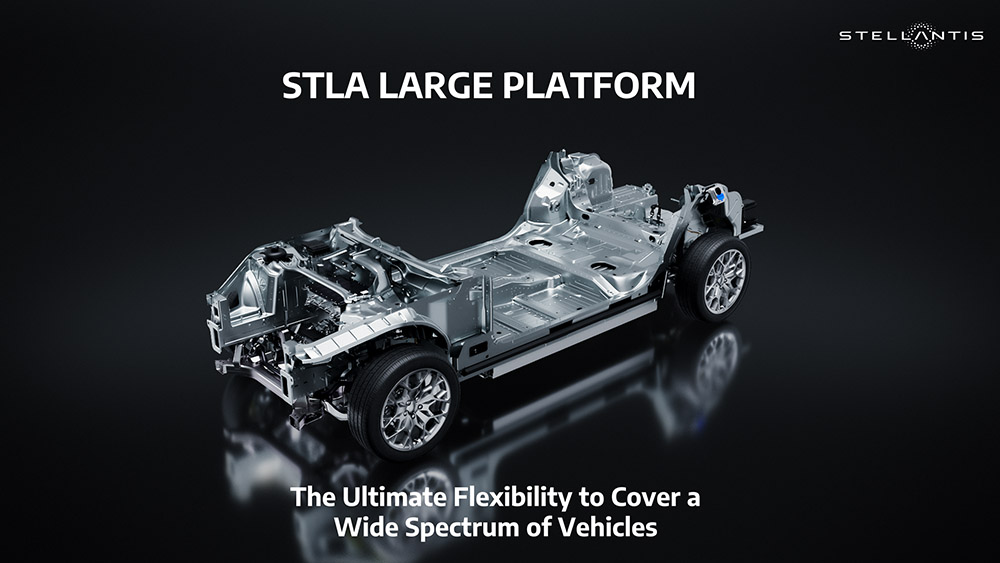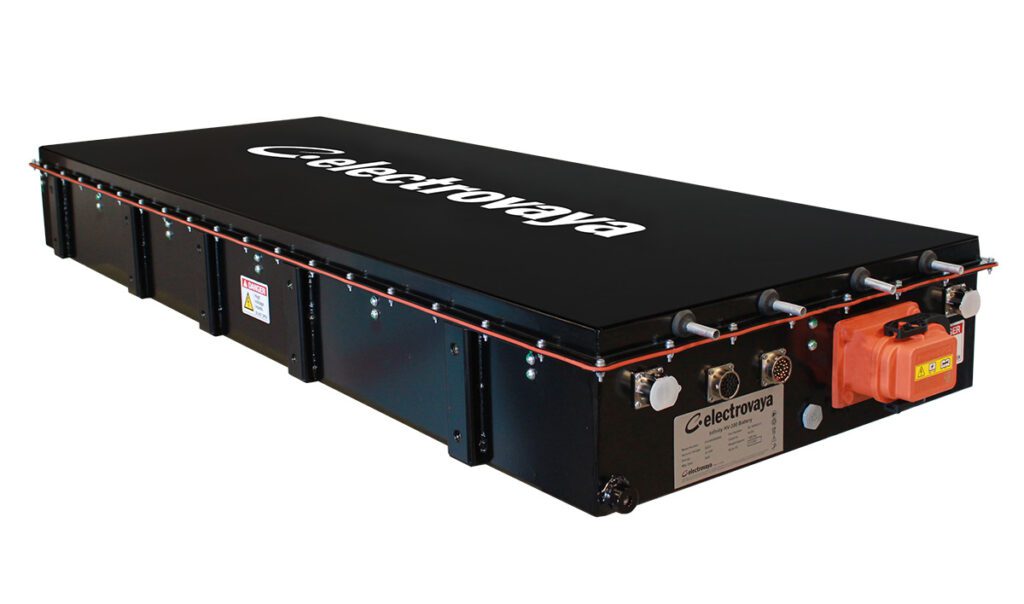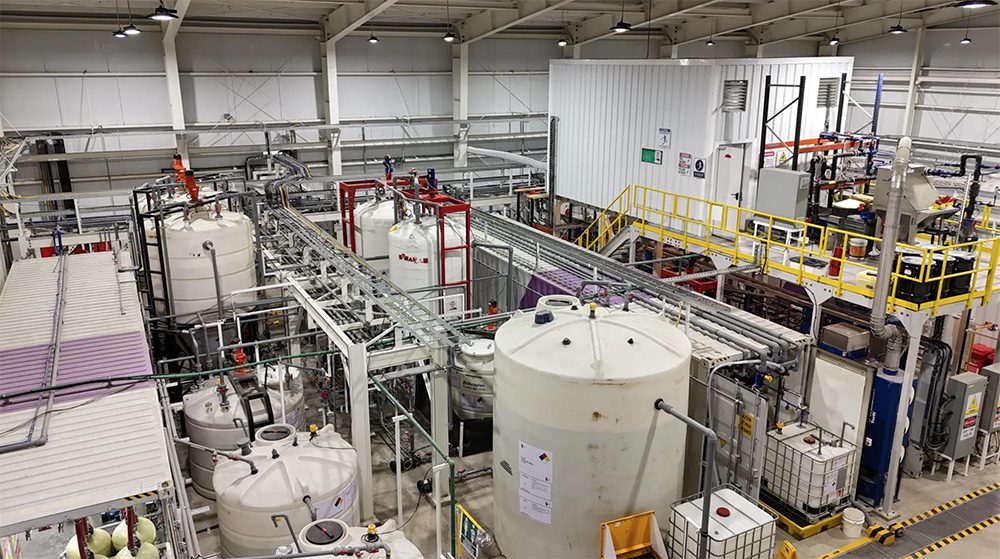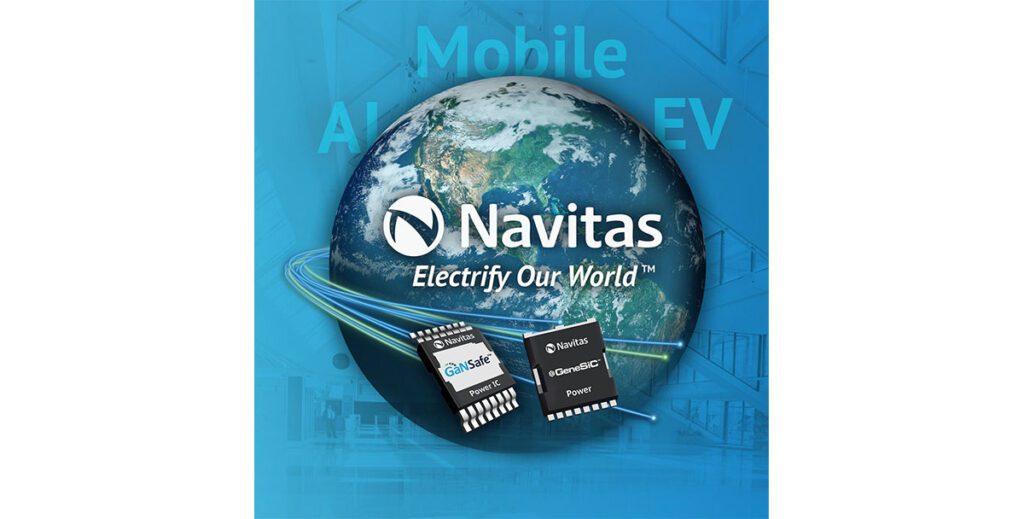Stellantis has introduced a new “highly flexible, BEV-native platform that is the foundation for a wide range of upcoming vehicles for global markets in the D and E segments.”
The STLA Large platform is one of four planned global BEV platforms—Small, Medium, Large and Frame—that will allow interchangeable battery cell chemistry, EDMs, power inverters and software control. (The company unveiled the STLA Medium platform last July.)
Stellantis describes STLA Large as “a BEV-native platform,” but says that it “also supports hybrid and internal combustion propulsion systems.”
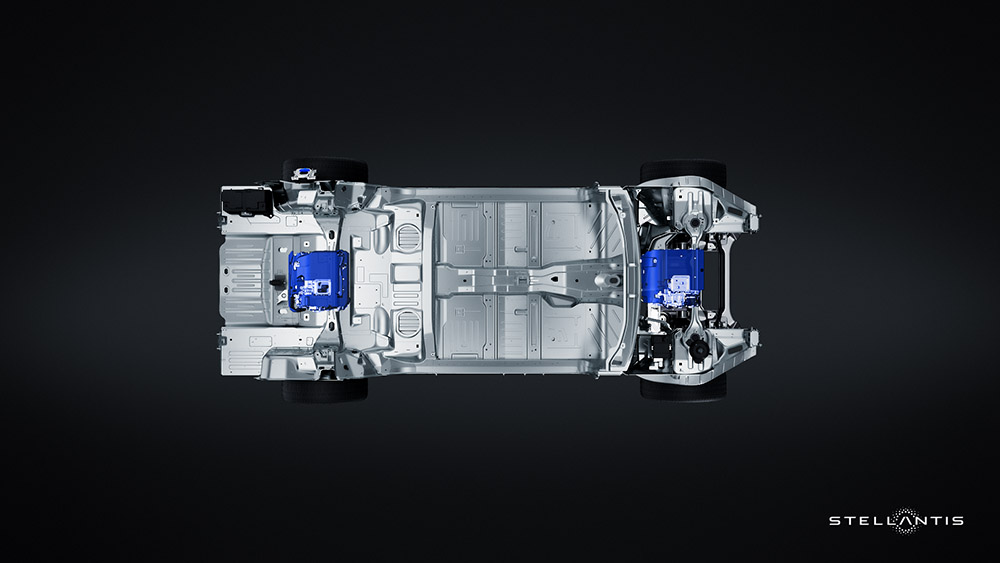
STLA Large will be used first in the North American market on the Dodge and Jeep brands, followed by other brands including Alfa Romeo, Chrysler and Maserati. Stellantis will launch eight vehicles based on the platform from 2024 to 2026. Brand-specific product announcements will begin this year.
The STLA Large platform features “technology flexibility that enables greater levels of vehicle diversity,” along with “robust and cost-efficient manufacturing processes that can be duplicated in multiple assembly plants.”
“The platform’s inherent flexibility enables engineers and designers to adjust the wheelbase, overall length, overall width and height, and ground clearance,” says Stellantis. “A variety of suspension modules and powertrain cradles can be employed to suit vehicle specific performance objectives that include ride, handling and comfort. Engineers can adjust key dimensions, such as the front spindle to the driver foot, the front and rear overhang, or the passenger compartment floor, to fine-tune vehicle capabilities and performance.”
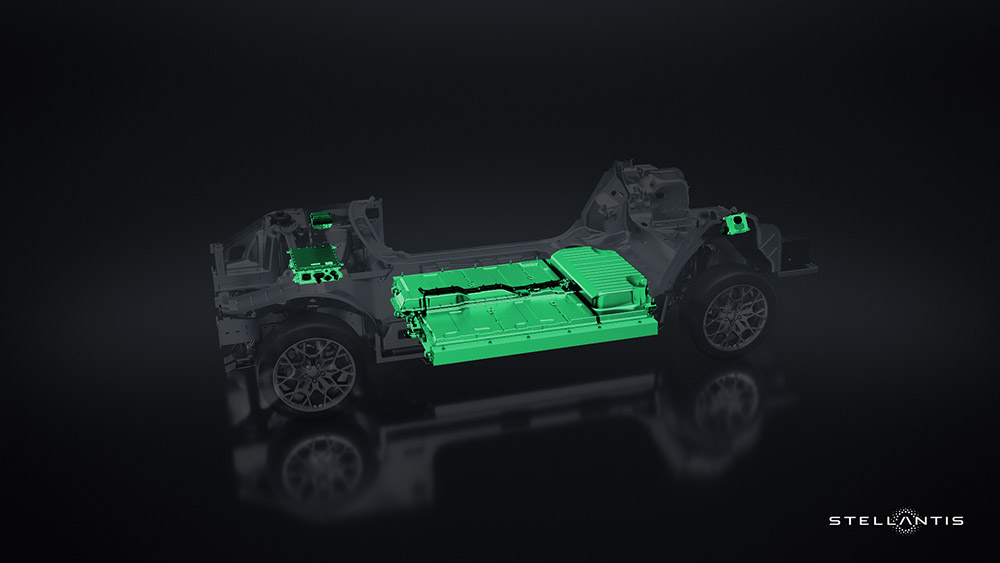
“STLA Large is designed and engineered as a native BEV platform with the option of 400-volt and 800-volt electric architectures,” says the company. “Three-in-one electric drive modules (EDMs) that incorporate the motor, power inverter and gear reduction can be configured in front-wheel-drive, rear-wheel-drive and all-wheel-drive layouts. The power inverter employs silicon carbide semiconductor technology to minimize power losses. Propulsion system performance can be upgraded during the vehicle’s lifespan via over-the-air software updates.”
The platform initially includes battery pack options with capacities between 85 and 118 kWh. Stellantis says it will enable some blazing performance specs: up to 500 miles of range; 0-100 km/h acceleration in the 2-second range; 4.5 kWh-per-minute fast charging; and “extreme power that will outperform any of the existing Hellcat V-8s.”
“Creating a family of vehicles from a well-engineered set of components that is flexible enough to cover multiple vehicle types and propulsions, overperforming any of our current products, will address each of our iconic brands’ customers,” Stellantis CEO Carlos Tavares said. “The flexibility and agility of this platform is its hallmark and will be a driving force for our success in the shift to electrification in North America.”
Source: Stellantis







